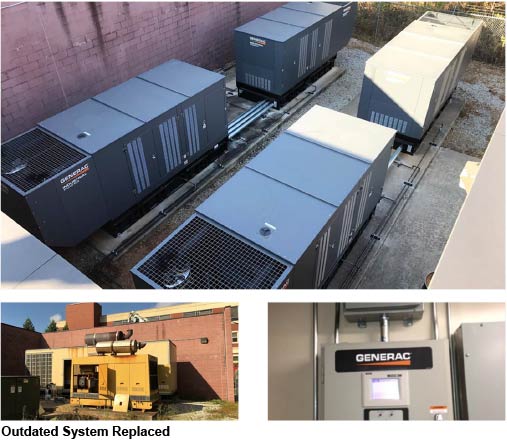July 2018 Articles:
- Featured Project: Healthcare
- Accounting for Flooding During Installation
- How to Apply NFPA 110-2016
- Save the Date – Generac’s Power Experience Tour
Featured Project: Healthcare
Covington, GA

With the current building load near 1MW, it was decided to go with a 4x600kW system with onboard paralleling and remote monitoring capability. The complete solution provides N+1 redundancy (N+2 on critical loads) and allows them to meet Joint Commission regulations for reporting and testing.
2,400kW Parallel, Diesel System
● 4 x Generac MD600 rated at 600kW each
● Sound Attenuated Enclosure
● PM-SC System Controller
● PM-PLS Backup System Controller
● 2,400kW / 480V
● N+1 Redundancy (N+2 on critical)
● Remote Communications
● Meets Joint Commission requirements for reporting and testing
● Expandable for future growth
Accounting for Flooding During Installation
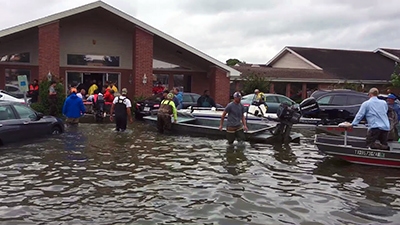
National Fire Protection Association (NFPA) 110 and 37 standards provide code-required guidelines for correct generator installation, and these address how to plan for potential flooding situations. NFPA 110 states that for natural conditions, Emergency Power Supply System (EPSS) design should consider the “100-year storm” flooding level or the flooding level predicted by the sea, lake, and overland surges from hurricanes. This means locating the generator in an area that mitigates flooding potential, such as on the roof or on a raised platform to situate it above the flood plain.
While the NFPA 110 standard was put into place in 1985, the standards have not always been fully followed. On Aug. 29, 2005, Hurricane Katrina pummeled the city of New Orleans. Power outages triggered standby power systems. However, the levees protecting the city from the hurricane failed. According to the Federal Emergency Management Agency (FEMA), this resulted in the flooding of 80% of the city. Many standby generating systems failed immediately as a result.
That’s when the industry began to take notice. In 2008, the National Electrical Code (NEC) added section 708, “Critical Operations Power Systems”. NEC 708 reiterated that equipment must be located above the 100-year floodplain. The flood-related requirements call for a number of actions, including the following:
- Using available flood hazard information for the siting, design and construction of buildings.
- Designing and constructing structures to withstand anticipated flood loads.
- Using flood-damage-resistant materials below the design flood elevation.
- Mounting the unit no less than 2 ft. above ground or above the point identified as the prevailing highest weather level mark.
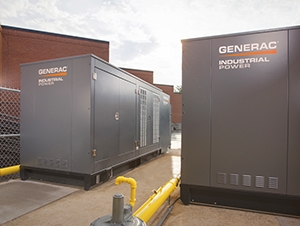
Severe weather doesn’t affect Generac Industrial Power systems. Kirchner said Generac generators are designed to start and run in any kind of weather. They are listed to the Underwriters Laboratories (UL) 2200 standard, a sign that the gen-set has been evaluated and approved by a nationally recognized testing laboratory.
A generator manufacturer only receives approval to apply the listing after a rigorous review and identification of all the unit’s components. Part of the UL2200 examination is a rain test, which is performed to simulate a heavy rain using specific water nozzles, water pressure, flow rates and direction of spray onto the gen-set enclosure while it is operating at maximum airflow through the enclosure.
After the water is sprayed onto the enclosure for one hour per side, the gen-set is shut down, and any amount of water accumulation inside the gen-set is evaluated for potential electrical hazards. The alternator is also hipot tested to ensure the electrical windings have not been damaged and to check for other electrical shorting by any ingress of moisture.
Generac makes all of its own enclosures up through 2 MW, but not everyone does. Some manufacturers imply the complete generator system is UL 2200 approved when in fact they are utilizing a UL-listed open gen-set and then applying a third-party enclosure, skipping the important UL2200 rain test process. Generac makes factory enclosures for all of it products to ensure the highest degree of factory testing and genset reliability.
Businesses should also consider fuel delivery when planning to install a backup power system. Generators require sufficient fuel supplies for extended running during storms.
“Businesses may not be able to get more diesel fuel in the event of a storm because of flooding,” said Kirchner. “And long-term outages often expose fuel quality issues when the addition of fresh diesel fuel stirs the fuel contaminants on the bottom of the tank.”
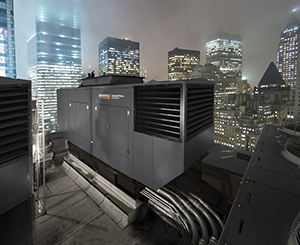
NFPA 110 also requires fuel to be tested annually and remediated as necessary. Kirchner said that diesel generators must have a preventative fuel maintenance program to be deemed reliable.
By comparison, natural gas generators avoid those fuel supply and maintenance issues. The natural gas pipeline network is robust. According to a 2013 report by Massachusetts Institute of Technology’s Lincoln Laboratory, natural gas distribution systems operate at a reliability rate exceeding 99.999%, with the exception of seismically active areas. Incidentally, that makes the natural gas distribution system approximately one-thousand times more reliable than a single-engine generator set, which is typically assumed to be 99% reliable.
In any case, Kirchner advises to always run the generator before a storm hits and transfer the facility load onto it to validate that it is working properly.
“Generac recommends generators be exercised weekly,” he said. “If the application will allow it, put facility load on the generator monthly. That will create the highest sense of reliability and ensure that the generator is up to the task of running the facility.”
By running necessary exercises and tests on the generator, as well as following all of the laws and regulations, your Generac generator will be ready to tackle any storm and ensure you are too.
How to Apply NFPA 110-2016
NFPA 110: Standard for Emergency and Standby Power Systems covers requirements for emergency and standby power systems whose reliable operation is necessary, in varying degrees, to ensure the safety of human beings.
Updates to NFPA 110 occur on a 3-year cycle, like many of the NFPA codes. A number of changes were made in the 2016 edition. In general, these changes were incremental: new requirements were added, old requirements were modified, and some were clarified.
Of particular interest are changes to Chapter 8: Routine Maintenance and Operational Testing, as those changes affect all installations covered by NFPA 110. A section on record keeping was added in 2016.
Definitions
A few definitions are important in understanding the changes to NFPA 110. These two definitions are fundamental to NFPA 110, as they describe the components of the system to which the code applies:
- Emergency power supply (EPS): The source of electric power. In practice, the EPS is typically the generation system. In paralleled systems, the EPS includes the generators and the paralleling gear (see Section 3.3.3).
- Emergency power supply system (EPSS): The EPS, together with its distribution, conductors, controls and monitoring devices, and transfer switches. The EPSS extends from the generators to the load contacts of the transfer switches (Section 3.3.4).
Two other definitions necessary to address the 2016 changes are:
- Level 1 systems are those whose failure could result in death or serious injury (Section 4.4.1). Examples of loads served by Level 1 systems are egress lighting, fire alarm systems, and fire pumps.
- Level 2 systems are those whose failure is less critical to human life or safety (Section 4.4.2). Annex A: Explanatory Material adds that Level 2 systems typically serve loads whose loss could create hazards or hamper rescue efforts. Examples of loads served by Level 2 systems are heating and cooling systems, sewage-disposal equipment, and certain industrial processes.
Section 1.1.3(6) states that NFPA 110 covers only Level 1 and Level 2 systems, whose operation is necessary to protect human beings. Requirements sometimes vary depending on the hazard should the equipment fail to provide power when necessary. No further levels are defined, as NFPA 110 does not cover systems that are less critical than Level 2.
The changes between the 2016 edition and the previous editions of NFPA 110 can be described as incremental. Changes affecting the design of standby power systems, which will affect only new systems installed under the 2016 edition, include new requirements for fuel systems. The most extensive changes to the code are additions to Chapter 8, describing routine testing and maintenance requirements, and will affect both new and existing systems. These additions include a new section on generation and retention of testing and maintenance records. A new requirement describes installation acceptance testing requirements for paralleling gear. Some of these changes are implemented in the code itself and are directly enforceable. Other changes are clarifications included in the explanatory material, which provide information regarding the intent of the code.
Automatically actuated valves in fuel systems
New to the 2016 edition is Section 7.9.13, which prohibits automatically actuated valves in the fuel supply or return lines. The intent is to avoid inadvertent interruption of the fuel supply by unintended or improper operation of a valve or its controls. Automatic control of fuel valves adds a layer of complexity to the fuel system and creates a single point of failure for the EPS.
There is no corresponding prohibition of manually operated valves. These valves are typically used to isolate portions of the fuel, allowing for continued operation of the system when one of its components requires maintenance. Section 7.9.11, unchanged from the previous edition, requires that manual valves provide a visual indication of their status. There is no direct requirement that manual valves be supervised to ensure that they are left in the open position after maintenance activities.
Clarification of requirements for multiuse fuel tanks
Section 5.5.1 prohibits using the fuel supply of a Level 1 system for any other purpose. In both editions, this prohibition is amended in paragraph 5.5.1.1, which permits the fuel supply to serve other systems, provided that other systems can’t draw down the fuel level to a point that would compromise the continued operation of the EPSS.
In the 2016 edition, additional language permits passive features designed to ensure that an appropriate level of fuel is available for the EPSS. The 2013 requirement can be read to require that the fuel-use rate of other systems must be so low that it can’t materially affect the amount of fuel available to the EPSS. The additional language in the 2016 edition permits other measures to limit the fuel drawdown. An example of such a passive measure might be the installation of the second fuel intake at a high level in the tank, so that other systems would lose their fuel supply before the continued operation of the EPSS was compromised.
Section 5.5.1.1 specifically permits passive features to prevent other systems from endangering the fuel supply to the standby power system. It doesn’t mention active features, such as automatically operated valves, for that purpose. Presumably, an automatically operated valve serving a second system wouldn’t meet the intent of the code because such a valve may fail in the open position as easily as it might fail closed, jeopardizing the fuel supply to the standby power system.
Interlocks for transfer switches
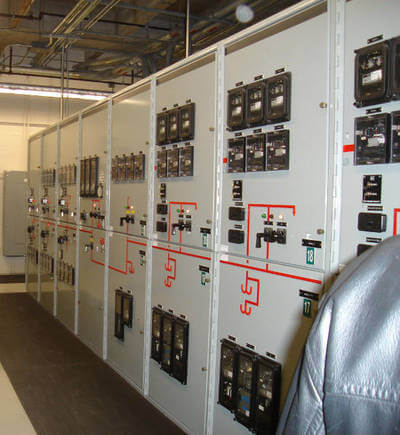
The most common type of transfer switch, an “open-transition” switch, briefly disconnects the load from both sources when it operates, even when switching between two live sources. A transfer from the alternate source to the normal source, as typically happens after the normal source is restored to service, results in a very short outage on the order of roughly 1/10 second.
This disturbance on the electrical system can be ameliorated with a “closed-transition” switch, which briefly connects the two sources before releasing its contact with the alternate source, typically for less than 1/10 second. Switch controls monitor the phase angle of each system and initiate the transition when the two sources are quite close to synchronization-when the phase angle between them is nearly zero and changing slowly.
A “soft-loading” system connects the two sources in parallel and controls the power output of the local source to smoothly transition the load from one source to another. When the load has been fully transferred to the destination source, the other source is disconnected. A soft-loading system can provide a very smooth transition between live sources, at the cost of increased complexity. A soft-loading system is a bona fide paralleling system, with all its attendant operational requirements. Such a system is normally applied where parallel operation with the utility is required for some other purpose, such as peak shaving, demand response, or to facilitate load testing of large systems.
Generally, closed-transition switches and soft-loading systems must be approved by the electric utility as well as by the AHJ. Some utilities will require complex protection systems before for even the briefest interconnection, while others will be more permissive. Designers should work with both AHJs and utilities to determine requirements for closed-transition switches or soft-loading systems before applying them.
Verification of paralleled systems
For systems consisting of paralleled EPSs, Section 7.13.4.1.3 requires that the control functions for paralleling generators and for load shedding must be verified against the system design documentation. This requirement is new to the 2016 edition. The previous addition did not address load shedding, and for paralleled systems, required only that load testing be performed with the quantity of EPSs intended to operate simultaneously.
At first look, this addition brings a layer of complexity to initial acceptance testing. Paralleling and load-shedding strategies can be complicated, with multiple contingencies. A thorough test of those functions will involve selectively disabling individual EPSs to simulate unit failure, and varying system loads to trigger load-shedding functions. Thorough testing of all functions, under all possible failure conditions and a reasonable number of load conditions, could become onerous for large systems.
In practice, though, this new requirement will have limited effect. Typical industry practice calls for extensive start-up testing of parallel systems, and most systems are commissioned by an independent authority. To a degree, this requirement codifies existing industry practice.
This requirement applies only to the initial acceptance testing of the EPS. Chapter 8: Routine Maintenance and Operational Testing contains a new provision, described below, calling for verification that the paralleling gear controls “will operate as intended.”
Changes to Chapter 8
A number of changes were made to Chapter 8: Routine Maintenance and Operational Testing. These changes will impact all systems covered by NFPA 110. Section 1.3: Application states that the testing and maintenance requirements of Chapter 8 apply to existing systems as well as new systems, while the remainder of the code applies only to new systems.
Owners of systems that require regular certifications, such as hospital systems, can expect to see their system testing and maintenance records inspected by their accrediting agencies, once those agencies adopt the 2016 edition.
Paralleling gear testing and maintenance
The 2016 edition adds a requirement for paralleling gear in Section 8.3.5(5), which requires verification that “system controls will operate as intended.” No such requirement was included in previous editions. This requirement is the companion to Section 7.13.4.1.3, described above, which requires verification of system controls, including paralleling and load shedding, during initial acceptance testing.
An exhaustive test of system control functions would require a considerable effort and would be disruptive to the operation of an existing facility. The operational testing requirements of Chapter 8 generally are designed to minimize the operational impact on an existing facility. This new requirement offers no specifics. In practice, it may be as simple as observing that the system is capable of bringing all units online in parallel, with selective load shedding demonstrated by taking a unit out of service while serving a simulated load. It remains to be seen how AHJs will interpret this requirement, and how it will be enforced.
Rotation of initiating transfer switches for monthly tests
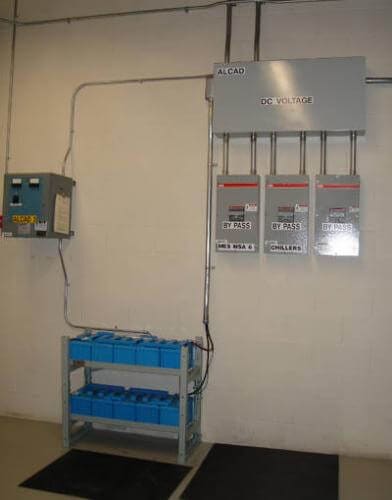
A corresponding new entry in Annex A: Explanatory Material restates the intent and clarifies this requirement, recommending that each successive test is initiated by a different switch. The Annex entry also states that “consideration should be given the ATS criticality,” suggesting that it is not necessary that each switch be operated in turn, but that critical switches-those that can affect the safety of human beings-might initiate tests more frequently than less critical switches.
Monthly testing of transfer switches
Transfer switches are required to be exercised monthly. Section 8.4.6.1 requires that each automatic transfer switch must be electrically operated to transfer from its normal position to the alternate position, and back to the normal position. A new entry in Annex A: Explanatory Material clarifies-and, to a degree, relaxes-this requirement, allowing operation of selected transfer switches to be performed at times other than the monthly test of the EPSS.
Annex A 8.4.6.1 states that selected ATSs may be transferred back to their normal position before the end of the 30-minute test of the EPSS. It also allows for selected switches to be operated at a different time from the EPSS test, when safety considerations or operational considerations require it. The term “selected” suggests that a limited number of switches may fall under this rule, and that there must be some compelling reason to test them for shorter durations, or at different times, than the EPSS test.
Records and clarifications
Section 8.5 was added to the 2016 edition to clarify and consolidate record-keeping requirements.
Sections 8.5.1 and 8.5.2 require that records be created and maintained for inspections, tests, maintenance, and modifications of components of the EPSS-and that those records be available to the AHJ on request. Section 8.5.3 describes information that must be recorded including date, identification of personnel performing the work, unsatisfactory conditions found and actions taken to rectify them, and testing of repairs. Finally, Section 8.5.4 requires that the retention period for these records be established.
A number of changes to the 2016 edition fall into the general category of clarifications. These changes have minimal impact on the design, operation, or maintenance of standby power systems and generally serve to bring the code into harmony with current technology and practice.
Elimination of the requirement for a rheostat
The 2013 edition calls for a “voltage-adjusting rheostat to allow ±5% voltage adjustment” on the generator control panel, in 5.6.9.9(4). The 2016 edition replaces the specific requirement for a rheostat with a more general requirement for a nonspecific “feature” to implement voltage adjustment.
A rheostat is a variable resistor, also called a potentiometer. In the analog generator-control systems of yesteryear, rheostats were typically used to set control voltages for manually adjustable setpoints, such as generator-output voltage. Recent control systems are digital devices and use other technologies to define setpoints-typically, values are entered into the controller through a keypad, touchscreen, or other interface. Given that more stable alternatives to rheostats were generally implemented, it’s not certain that this requirement has been broadly enforced in recent years. This change deletes a requirement for an obsolete technology. [subhead]
Battery definitions clarified
Definitions for valve-regulated lead-acid batteries (VRLA) and vented, or flooded, batteries appear in Section 3.3: Definitions. In the 2013 edition, a description of each type of battery was included in its definition. In 2016, these descriptions were moved to Annex A: Explanatory Material. It’s unlikely that this change will have any effect on enforcement.
Clarification of “permanently installed”
Both editions require that “all equipment shall be permanently installed” (Section 4.4.3). NFPA 110 is applicable to installations that have some level of impact on the safety of human beings. It’s therefore expected that no component of even the slowest system will have to be physically relocated to provide service when the primary power source fails.
A new paragraph has been added to Annex A: Explanatory Material, clarifying that this requirement is not intended to prohibit the use of portable temporary equipment when the permanent installation is out of service.
Clarification of battery-charger requirements
Section 5.6.4.6 describes requirements for battery chargers for the starting and control batteries. In the previous edition, wording for this requirement was a bit clumsy and hard to follow, calling for a charger for “recharging or maintaining a charge, or both, on the starting or control battery unit, or both.”
The 2016 edition changes this wording to, “maintaining a charge on both the starting and control battery unit.” The revised wording clarifies that the requirement strictly applies to both starting and control batteries.
Clarification of recording requirements for initial acceptance testing
Both editions require a 1.5-hour run with building load, or simulated building load, in initial acceptance testing, with each generator’s operational information recorded at regular intervals. In the 2013 edition, Section 7.13.4.3.4 required this information to be recorded every 15 minutes:
Cranking time until the prime mover starts
- Time to reach operating speed
- Time to reach a steady-state condition, with all switches transferred
- Voltage
- Frequency
- Amperes
- Oil pressure
- Water temperature.
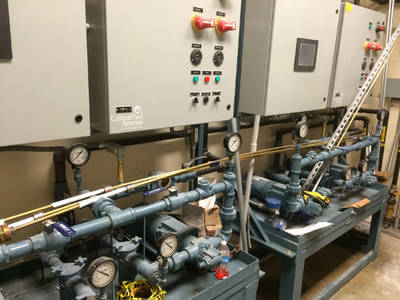
These requirements have been revised in the 2016 version to separate items that occur once from those that persist throughout the test. Section 7.13.4.3.4 now calls for recording all the single-occurrence items listed above at when the system first accepts load. Section 7.13.4.3.5 requires recording of the continuous quantities at first-load acceptance and at 15-minute intervals thereafter.
This change is generally an acknowledgment of the realities of the actual course of the prescribed acceptance test. It will have a negligible effect on enforcement.
Purging and cleaning of fuel gas lines
Section 7.9.1.1 describes requirements for installing and maintaining the fuel system, referencing several applicable NFPA codes concerned with flammable gases and liquids used as fuel. The code is unchanged from the 2013 edition, but a new entry in Annex A: Explanatory Material recommends that cleaning and purging of fuel gas piping be performed in accordance with NFPA 56: Standard for Fire and Explosion Prevention During Cleaning and Purging of Flammable Gas Piping Systems.
Changes and additions to the 2016 edition of NFPA 110 are incremental, with regard to the code as a whole. The design of new systems will be primarily affected by the prohibition of automatically operated valves in the fuel lines of the standby power system. The clarification of requirements for transfer switch interlocks may make new options available for continuity of power in jurisdictions where the previous requirement was interpreted to prohibit any interconnection, inadvertent or otherwise. Verification of parallel-system operation, long the industry norm, may have an impact on the acceptance testing portion of system specifications. Going forward, new testing, maintenance, and record-keeping requirements will affect all systems.
Tom Divine is a senior electrical engineer and project manager at Smith Seckman Reid Inc. He is a member of the Consulting-Specifying Engineer editorial advisory board.
View the original article and related content on Consulting Specifying Engineer

